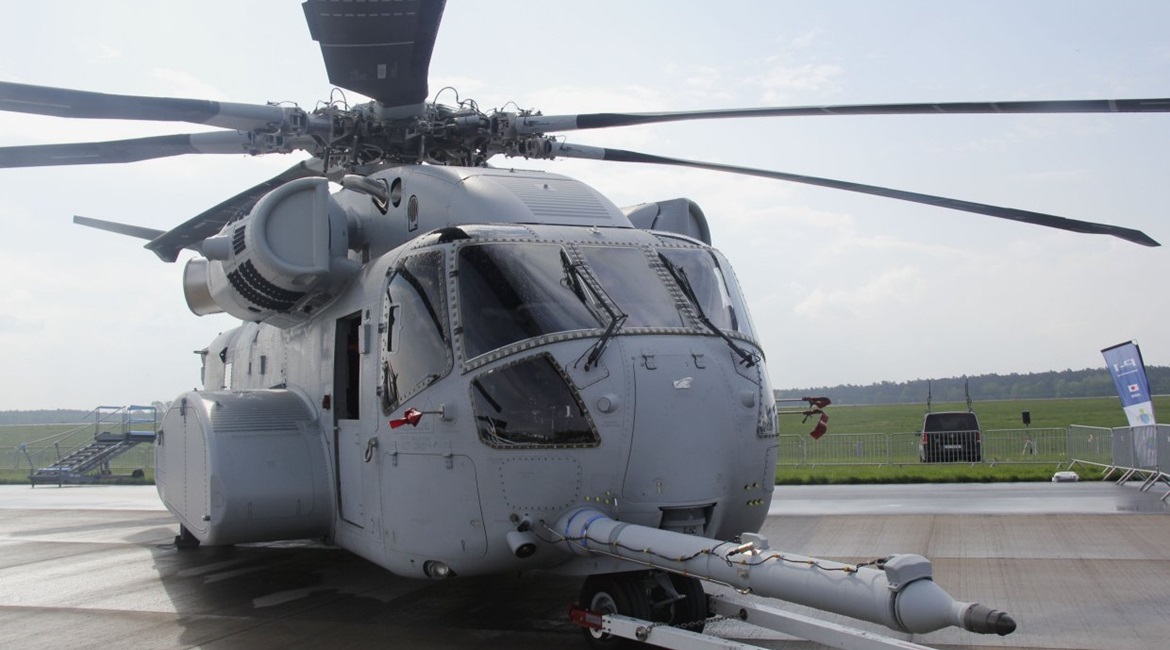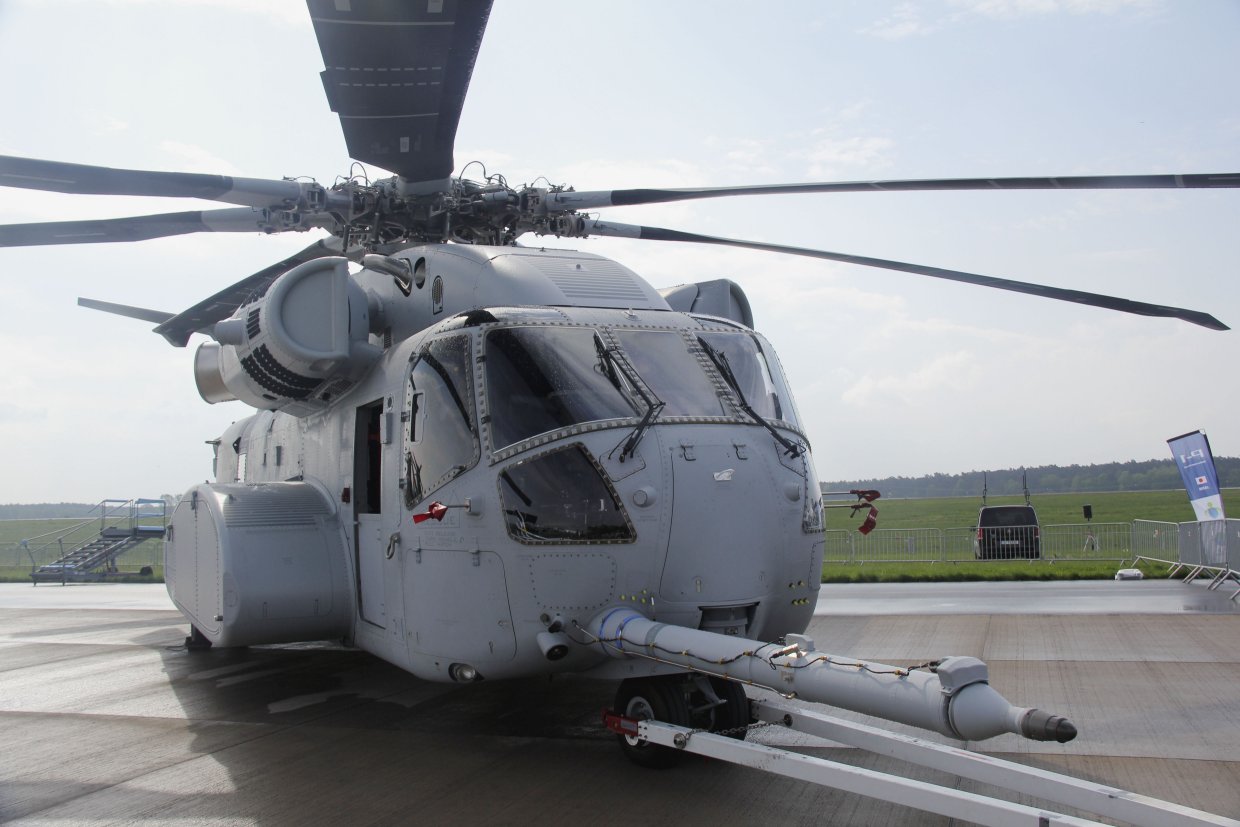
The US Department of Defense (DoD) is looking to address ongoing problems with the Sikorsky CH-53K King Stallion’s main gearbox (MGB) by sourcing some key components from an alternate supplier.

NAVAIR is seeking an alternate parts supplier for the CH-53K’s main gearbox to mitigate risks to the programme. (IHS Markit/Gareth Jennings)
The Naval Air Systems Command (NAVAIR) issued a solicitation on 22 April for alternative sources for the MGB to mitigate current production risk and secure volume increases for future production. Sikorsky’s parent company, Lockheed Martin, did not disclose which particular components are to be alternatively sourced.
The CH-53K is fitted with an advanced drive system incorporating a multiple-path split-torque gearbox with load-sharing capability, which enables the helicopter to use the extra power of the three General Electric T408-GE-400 turboshaft engines.
According to NAVAIR’s request for information (RFI), the alternate supplier would participate in the CH-53K programme as a sub-contractor to Sikorsky, which is “the only contractor with the requisite knowledge, experience, and technical data that can meet the government’s requirements on a timely basis”.
In response to the NAVAIR RFI for alternate MGB parts, Sikorsky CH-53K programme director Bill Falk told Jane’s in a statement, “Sikorsky’s existing supply chain can support the currently contracted quantities of aircraft. Due to the complex nature of the gearbox manufacturing, and to strengthen the supply chains for future production quantities and rate, second sources for some key components of the main gearbox are being developed.
Sikorsky has invested in improved tooling, modelling, and manufacturing at several suppliers to ensure the integrity of the programme schedule for currently contracted aircraft. We are confident we will meet the marine’s goal for operational deployment in 2023–24.”
Looking to read the full article?
Gain unlimited access to Janes news and more...






